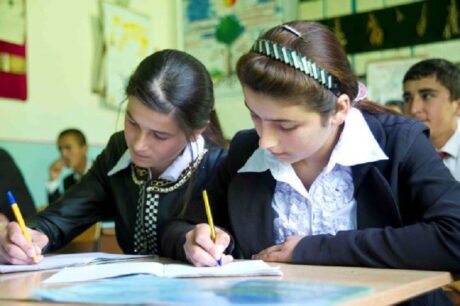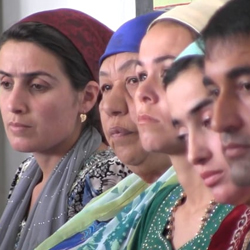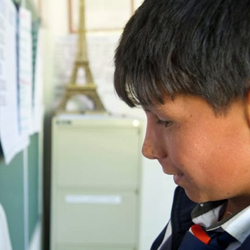
O Terceira Conferência Internacional sobre Financiamento para o Desenvolvimento concluiu em Adis Abeba, Etiópia, com aspirações esperançosas de financiar os ambiciosos Objectivos de Desenvolvimento Sustentável da ONU relacionados com a educação, incluindo $400 bilhões em compromissos dos bancos multilaterais e regionais de desenvolvimento durante os próximos três anos.
À medida que as partes interessadas definem as suas prioridades para a agenda de desenvolvimento pós-2015, é fundamental que as políticas, programas e recursos significativos concentram-se na prevenção do abandono escolar. Isso reforçará o objetivo previsto de garantir que todas as meninas e meninos tenham acesso gratuito, ensino primário e secundário equitativo e de qualidade, 2030.
O que está em jogo
Embora a conclusão do ensino primário tenha aumentado globalmente, UNESCO projetos que até o final de 2015, apenas uma em cada seis crianças em países de rendimento baixo e médio – quase 100 milhões de crianças – abandonarão a escola antes de concluírem o ensino primário. A projeção é ainda mais surpreendente para os países de baixa renda, onde se espera que mais de uma em cada três crianças abandone a escola.
A taxa mundial de conclusão da quinta série para 2015 é aproximadamente 75 por cento. No Sul e Oeste da Ásia, a projeção cai para 64 por cento e, na África Subsaariana, 58 por cento.
Em 2015, apenas 13 fora de 106 os países verão 97 percentagem da sua população jovem termina a escola.
A componente de género
Pode ser uma surpresa que os meninos, geral, são mais propensos a abandonar a escola mais cedo. Os meninos tendem a abandonar a escola a uma taxa de 26 por cento em comparação com 20 porcentagem de meninas. Uma vez inscrito, as meninas têm chances iguais ou melhores que os meninos de continuar nas séries superiores da escola primária.
A pobreza extrema pode afectar o aproveitamento, no entanto, com as raparigas mais pobres ainda a enfrentar uma grave desvantagem em relação aos rapazes mais pobres no acesso e conclusão do ensino primário. De forma similar, no nível secundário inferior, o aproveitamento escolar das raparigas continua a ser uma preocupação significativa nos países mais pobres.
No entanto, nos países mais ricos, são os rapazes que têm maior probabilidade de abandonar o ensino secundário inferior, e essa tendência é ainda mais evidente no ensino secundário. Na verdade, as taxas de conclusão do ensino secundário superior das raparigas excedem as dos rapazes em todos os países da OCDE, excepto a Alemanha.
Fatores de abandono escolar
Existem vários fatores que influenciam se as crianças permanecem ou não na escola, muitos dos quais também representam um problema para a inscrição inicial: pobreza; acessibilidade escolar; qualidade ou relevância da educação; ambientes escolares inseguros ou inseguros; etc..
As crianças pobres são as mais vulneráveis, abandonar a escola para conseguir um emprego remunerado, puxado para tarefas domésticas ou, no caso das meninas, gravidez na adolescência ou pressão para casamento precoce. As causas variam de país para país, e dentro de países e regiões.
Uma série de intervenções destinadas a expandir o acesso e a melhorar a qualidade ajudaram a reduzir o abandono. As iniciativas de acessibilidade incluem a oferta de bolsas de estudo para meninas, transferências de dinheiro, abolição das taxas escolares; uniformes escolares; programas de alimentação escolar e criação de ambientes escolares mais seguros. Em termos de melhoria da qualidade, existem iniciativas para melhorar a formação de professores e apoiar, fornecer materiais de aprendizagem relevantes e modernos e integrar tecnologia e práticas sensíveis ao género
Ainda, o abandono escolar continua a ser uma preocupação persistente.
Os novos Objectivos de Desenvolvimento Sustentável apelam a um maior foco em alcançar os grupos mais marginalizados: os mais pobres, os deficientes, minorias étnicas e crianças em países em conflito. Estes grupos marginalizados são os mais vulneráveis ao abandono escolar e, para concretizar o objectivo de uma maior equidade educativa,, temos que enfrentar a questão do abandono escolar.
Para fazer isso, a comunidade de desenvolvimento internacional deve prestar atenção às abordagens que comprovadamente têm impacto e podem ser implementadas em grande escala.
SDPP: Uma abordagem comprovada para mitigar o abandono escolar
Soluções bem-sucedidas devem ser adaptadas a cada país, com uma compreensão profunda dos fatores que influenciam o abandono do abastecimento..
A Creative Associates International empreendeu uma abordagem particularmente bem sucedida para prevenir o abandono escolar que ilustra uma solução personalizável que pode ser amplamente replicada.
Os EUA. Agência para o Desenvolvimento Internacional financiada Piloto de Prevenção do Abandono Escolar foi implementado pela Creative no Camboja, Índia, Tajiquistão e Timor-Leste.
Os especialistas da Creative examinaram de perto os fatores de abandono, identificar os grupos mais gravemente afetados, notas e/ou áreas geográficas, e analisou os fatores de risco relevantes antes de projetar, implementar e avaliar intervenções para manter crianças em risco na escola.
Uma característica central do Piloto de Prevenção do Abandono Escolar da Creative é um Sistema de Alerta Precoce que utiliza dados escolares prontamente acessíveis para identificar alunos em risco de abandono escolar, e apoiar professores, famílias e comunidades para atender às suas necessidades. O programa piloto também incorpora uma segunda intervenção, inclusive para alguns países centrado no estudante, programas práticos depois da escola, aulas particulares, laboratórios de informática, recreação na escola, currículos de desenvolvimento pessoal e programas de apoio social.
“Uma razão pela qual o programa é tão eficaz na redução do abandono escolar é porque é um esforço de toda a comunidade,” escreve EUA. Embaixador no Camboja William E.. Todd. “O Programa SDPP trabalha diretamente com os estudantes, professores, e grupos comunitários para ajudar as crianças a permanecer na escola e a trabalhar para um futuro melhor.”
É precisamente este tipo de abordagem personalizada que pode ser fundamental para manter as crianças na escola e garantir que estão preparadas para o sucesso no ensino superior e para um emprego significativo..
Prevenir o abandono escolar é fundamental para o sucesso dos Objetivos de Desenvolvimento Sustentável.
Cris Revaz atua como Conselheiro Educacional Sênior, com experiência em defesa da educação global.



